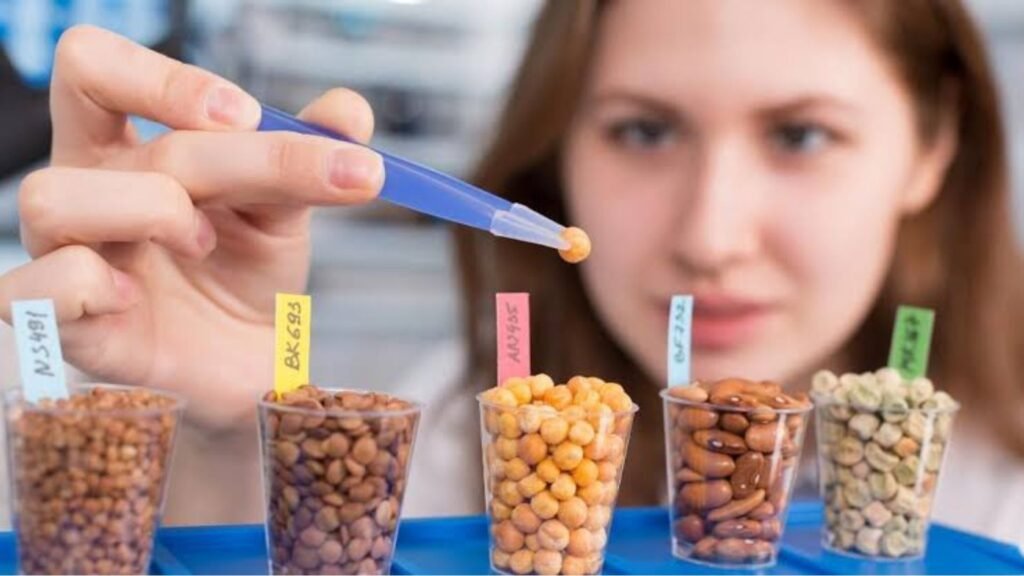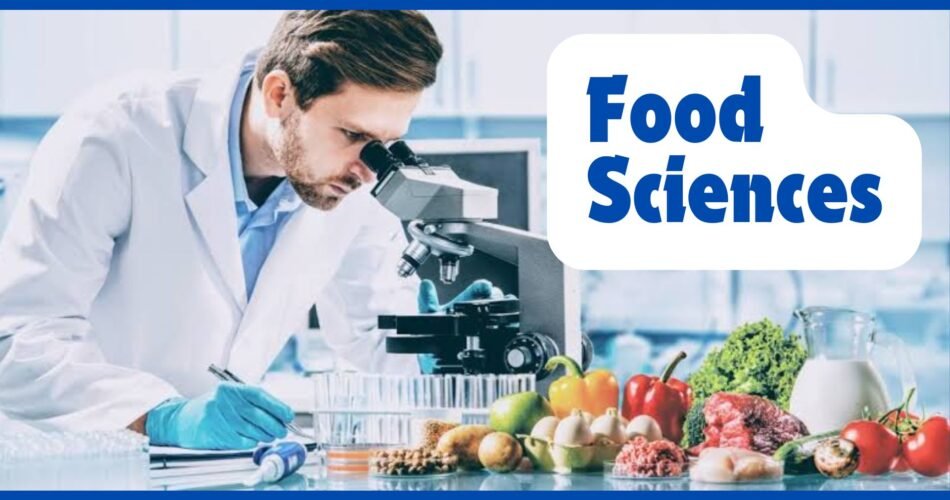This blog contains information about Food Science. In the start, it introduces and explains what is Food science. Then it defines who is a Food Scientist. It also explains the Study of Food Science. Then it elaborates the Types of Food Science in detail. In the end, it discusses the Importance of Food Science. This blog contains Study, Types and Importance of Food Science.
What is Food Science?
Food science is a multi-disciplinary field that integrates different sciences such as chemistry, microbiology, engineering, and nutrition to address issues related to food production and processing.
This field is related food and food safety. It includes all the processes in food industry. The modern populations and civilizations require safe and healthy diet for them and their upcoming generation. Food science use scientific techniques to make sure the the food is safe.
Food science uses chemistry, nutrition and other sciences to evaluate the quality of food so this science work for the betterment of food quality. It uses laboratory experiments, analysis and discovery about safe diet options and better alternatives for safe quality food. This field not only work for the safe food supply for humans but also supplies and discovers safe food for animals, i.e. Hills science Dog Food, Science Diet Kitten Food, Puppy food etc.
Food science deals with the best usage of food resources. It provides us strategies and technologies to carry out better alternatives and better use of food resources and also food related products. Food science work for finding out how to behave in harvesting, processing, distribution, storage and also the preparation of food.
This field help us to utilize and maintain the food resources by taking care of the food security. This works to provide safe and healthy food to the consumers. And this all is done with the help of scientific investigation and experimentation.
Food Scientists:
Food scientists are professionals that have a Degree in Food science. Their duty is to improve the safety, quality and efficiency of food production. Their work include laboratory and field work.
They monitor safety and improvement of food. They face real-world problems related to food supply and technology. Food scientists conduct research in the agricultural environment and work for the betterment of food sector and food safety. You can take a professional degree in Food sciences, Microbiology or Chemistry to be a food scientist so these field help you to improve the production, processing and supply of food. You can also complete Masters or MS in Food Science in this field. This blog contains Types, Study and Importance of Food Science.

Study of Food Science:
Study of food science involves the most initial stages of food sector to the final stage of food supply and preservation. Following points are involved in the study of Food Science:
i. Food Composition:
Composition of food means the analysis of materials and components of the food we it so food science includes the study of nutrition present in the components of the food. The composition of food includes macronutrients, micronutrients and bioactive compounds. This all is targeted and studied in Food Sciences. It is the first step to study in the field of Food science so this makes sure that the composition of food is safe and healthy.
ii. Food Preparation:
After studying the composition of food, the next step is the preparation process of the food. Sometimes composition of food is effected or disturbed because of inappropriate preparation of the food and food products. This really counts in getting the safe and healthy food. The preparation processes should be appropriate and suitable according to the composition of food, so that its quality cannot be compromised or neglected.
iii. Food Processing:
This is the third step in the study of food science. Food processing is the process that uses equipment, energy, and tools to efficiently transform the food resources, such as grains, meats, vegetables etc. in different food products for the market. This also needs attention because neglection in this process can effect the quality of food and can also deteriorate the nutrition present in the food products as compared to in food resources naturally.
iv. Food Preservation:
Preservation is the process in which we save the materials and food for a long-time and then use it when needed. Food preservation is also a critical process, because there are different techniques to preserve different types of food. Food sciences conduct research in the field of preserving the food for longer shelf life. It uses laboratory analysis and experimentation in order to find effective ways to preserve the food for a long-time without any effect on food safety and nutritious value.
v. Effects on Human Health:
The work of Food science does not end after studying the composition, preparation, processing and preservation of food. But it also includes the effects of certain food items or food products on Human health. It performs research on the health effects of foods and nutrition on humans in-depth. And then it provides awareness to the people in order to use the food appropriately and to avoid illnesses such as food poisoning, Typhoid, Cholera and other Foodborne diseases that harms humans.
These are the processes involved in the study of Food Science.
Types of Food Science:
These fields are called as Major of Food Science. Following are the Types of Food Science:
1. Food Chemistry:
It is a type of food science that works for the understanding of molecular structure of the food we consume. Food chemistry studies the chemical processes and the relationships between biological and non-biological components of foods. This includes laboratory work and microscopic study of food resources in order to know and improve their quality along with its safety. You can do specialization in Food Chemistry.
2. Food Engineering:
Food engineers explore processes from materials of the food to the packaging process and also involves how to preserve that food. It is a very important for the food science industry. It is a scientific, academic, and professional field that interprets and applies principles of engineering in making, processing, packaging and also the preservation of the food in effective way.
3. Food Microbiology:
Food microbiology is the study of microorganisms that inhabit, create and contaminate food. This field investigates the microorganisms that involves in the spoilage of food and also in foodborne disease. It contains laboratory analysis required for control of food-hygiene, quality, and also safety as set out in ISO (International Organization of Standardization).
4. Sensory Analysis:
Sensory analysis is a scientific method used to evaluate and measure the sensory properties of products and particularly food. This sub-field of Food Sciences focuses on evaluating foods based on five senses; taste, smell, touch, sound and sight. This performs the analysis of food using scientific techniques and also statistical techniques to get appropriate results.
5. Nutrition:
Nutritional science is the science that studies the physiological process of nutrition. It involves interpreting the nutrients and also other substances in food in relation to maintenance, growth, reproduction, health and disease of an organism. It is a vast field of Food science as it studies the nutritive factors of the food and guides about their effects in detail.
These are the main types of Food Sciences.
Food Science Occupations:
Following are some Occupations or Careers in the study of food science:
- Food Product and ingredient Development Scientist
- Sensory Scientists
- Food Microbiologist
- Food Safety Expert
- Food Chemist
- Food Process and Packaging Design Engineer
- Quality Control Supervisor
- Food Plant Production Supervisor or Manager. etc.
Importance of Food Science:
Following are some points of Importance of Science:
- It works for the betterment of safety of food and food products.
- This field makes sure to research on increasing the shelf life of the food.
- It addresses global food Challenges that are effecting food and nutrition in the world.
- This works for managing and also for fighting against food allergies and sensitivities.
- It addresses the important issues such as Reducing outbreaks of foodborne illnesses, create safe processing and packaging of food.
- Food Science also work for the improvement of Nutritional quality of food.
- It works for the innovation of cutlery experiences in our daily life routine.
These points shoes the importance of Food Science. This blog contains Types, Study and Importance of Food Science.

To learn about more topics, Click the links below:


Comments